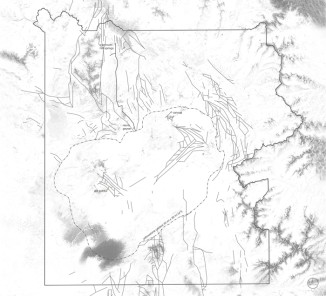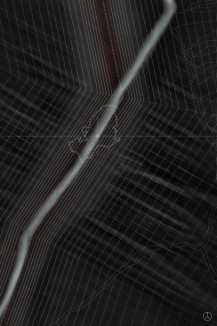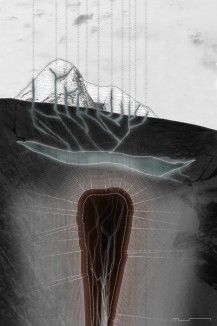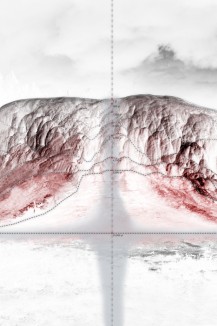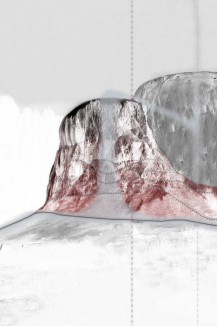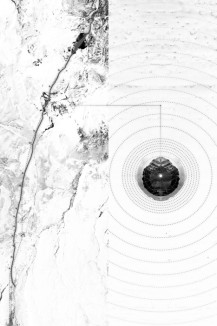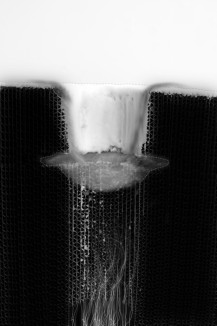Mammoth Hot Springs
This slideshow is part of: Master of Architecture II Spring 2012
Mammoth Hot Springs – Yellowstone National Park
Wyoming, United States
Betty Bluvshtein
The chosen site for study was the Mammoth Hot Springs, a relatively small geothermal feature located within Yellowstone National Park on the border between Wyoming and Montana. A unique characteristic of these springs was their capability to deposit rich amounts of travertine in one particular place. I focused on the story and narrative behind the process, gaining insight on how such a process occurs, both procedurally and temporally.
I began by researching the origins of Yellowstone and discovering a very complex and intrinsic underground system that created the above ground residue. Yellowstone is a very active geological area, fueled by an active caldera that spreads heat throughout the landscape via hundreds of fault lines. One fault line in particular is considered to be one of the strongest, the Norris-Mammoth fault, which connects the Yellowstone Caldera, the Norris Geyser Basin and the Mammoth Hot Springs. Along this line, heat travels at varying depths and intensity, in combination with a hidden river that is heated below grade by the fault. This water travels underground along the fault line. Its sources are the Norris Geyser Basin as well as the nearby Gardner River Mountain runoff. As it travels it gains speed, heat and minerals. Pressure pushes the water up to the surface, transforming it into travertine deposits when it reaches the ground. The Mammoth Hot Springs are essentially a residue of this complex underground system that demonstrate a singular poetic action – puncturing.
In essence, water is puncturing the ground to leave its mark, its narrative on the surface. Taking this into account, a proposal developed that involved both heightening the processes occurring by manipulating the surface, and revealing the seemingly invisible processes occurring below ground. By creating punctures along the Norris-Mammoth Fault Line that would reach both the underground river and the heat below, the surface, in varying degrees of intensity, would act as a host for more travertine deposits. These deposits would acts as markers, as a new path towards Mammoth, allowing the process to create the story and path.
This project is one of both narrative and process. The discovery and investigation of unseen processes and the residues they leave behind have an immense implication on architectural discourse.

